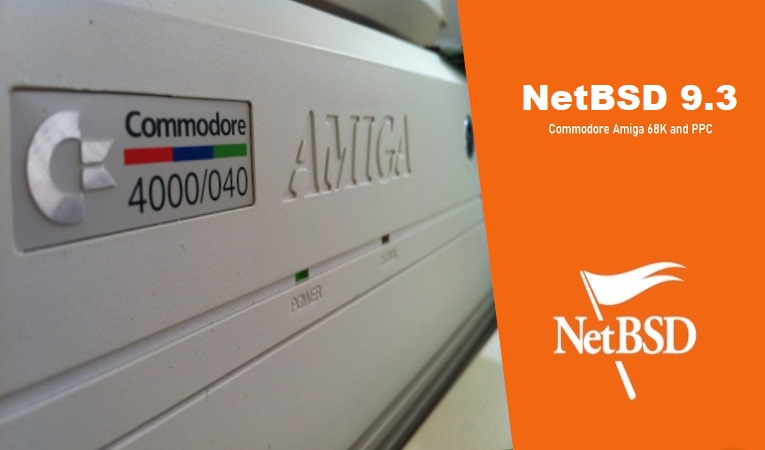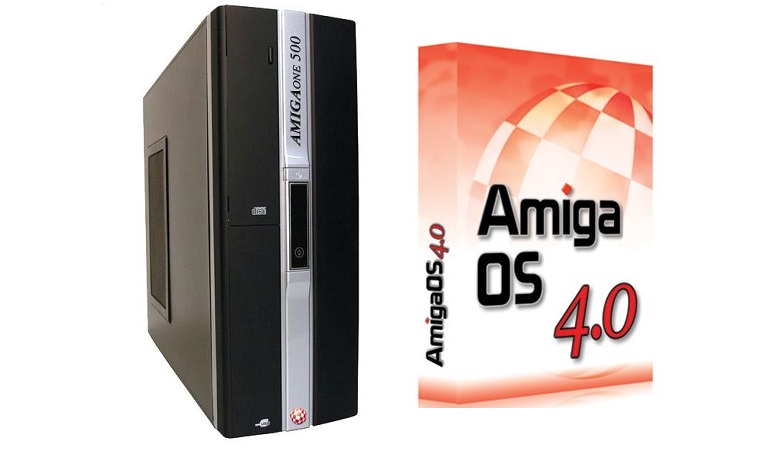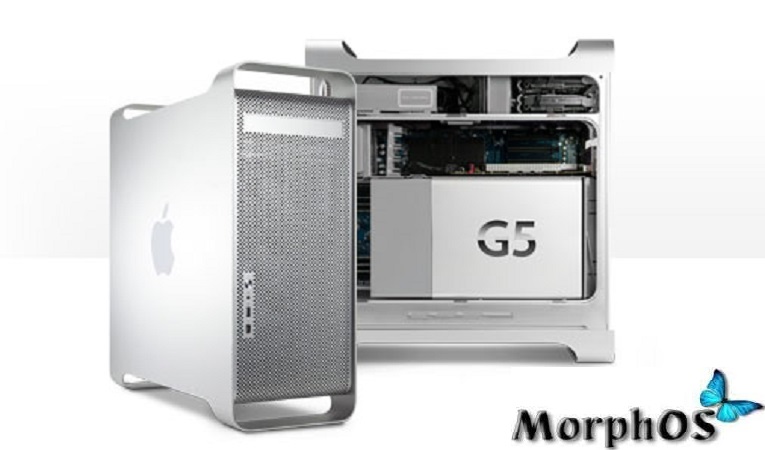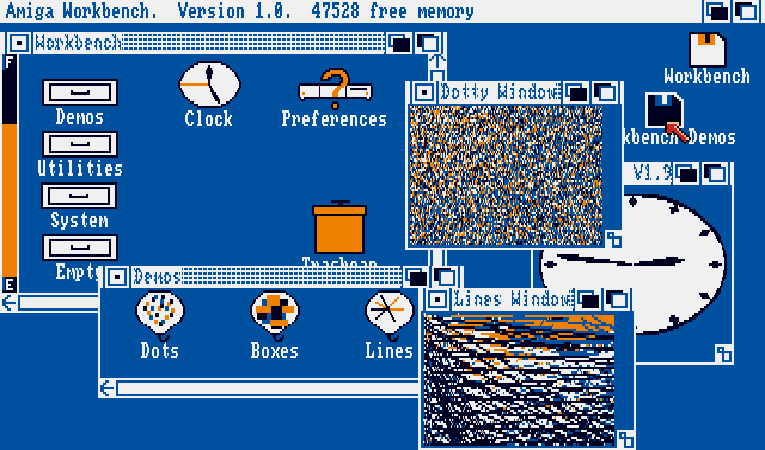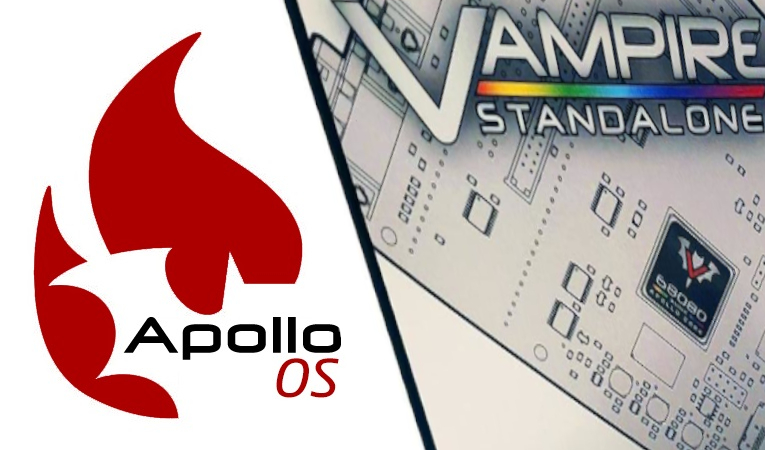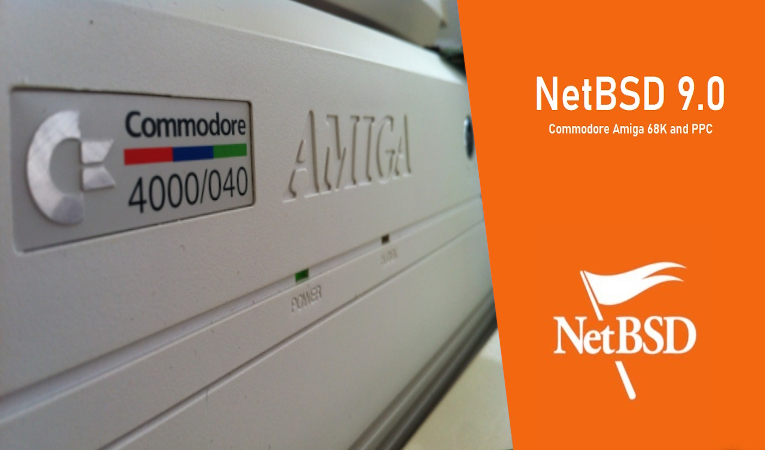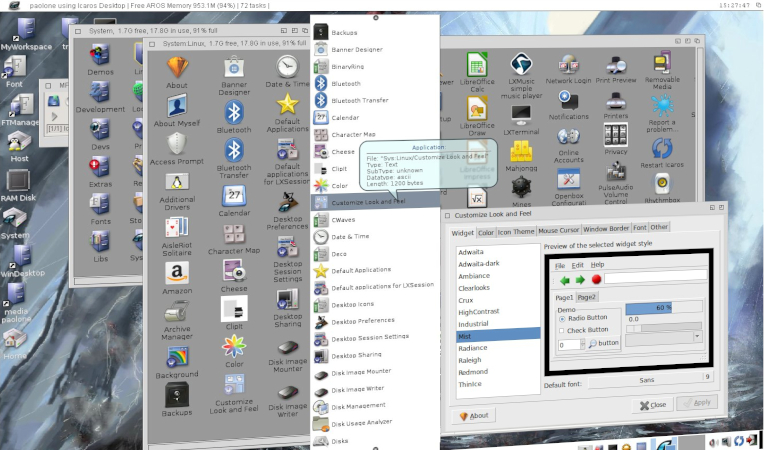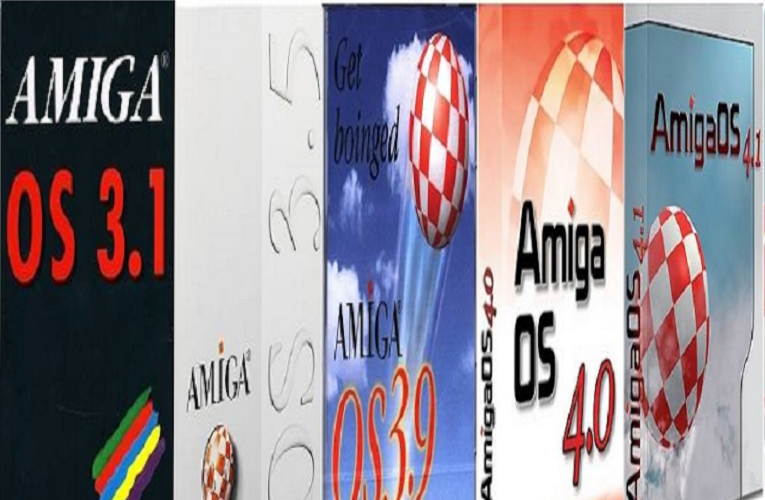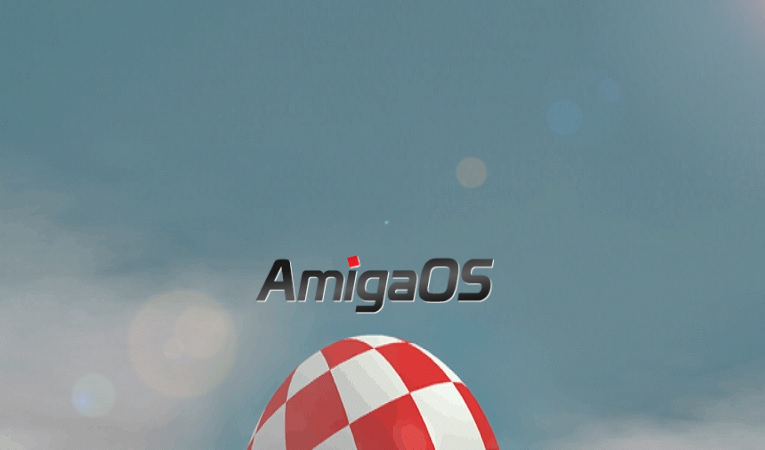
First some history about the legendary operating system, the Amiga computer was introduced in 1985, and its operating system, AmigaOS, featured a revolutionary GUI called “Workbench.” Workbench provided a graphical environment that enabled users to interact with their Amiga systems in a user-friendly and intuitive manner. It featured a mouse-driven interface, draggable windows, icons, and a pointer known as the “mouse pointer” or “pointer sprite.” Workbench allowed users to multitask efficiently, enabling them to run multiple applications simultaneously. The initial version of Workbench, known as Workbench 1.0, was released with the launch of the Amiga 1000 computer. It introduced users to a new way of interacting with computers, setting it apart from other operating systems of that time. Workbench 1.x provided a simple and clean interface, featuring a single-tasking environment. It allowed users to launch applications from disk-based icons and provided a limited set of utility programs. The next major iteration of Workbench was version 2.0, released in 1990. Workbench 2.x brought substantial improvements, including a redesigned look with a 3D appearance, enhanced multitasking capabilities, and a more sophisticated set of utility tools. The introduction of “datatypes” allowed Workbench to display files with different formats without the need for dedicated applications. This version also introduced support for hard disk installation, making it more user-friendly and efficient. Workbench 3.0, released in 1992, marked another significant milestone in the evolution of the Amiga operating system. It brought further visual enhancements, including improved icons and an updated color scheme. Workbench 3.x introduced an advanced file system known as Fast File System (FFS), providing better disk performance and reliability. Additionally, this version included improvements to the system preferences and introduced built-in support for file compression. After Commodore’s bankruptcy in 1994, the development and distribution of AmigaOS passed through various hands, leading to several updates and improvements. The most notable development came with the release of AmigaOS 4. AmigaOS 4.1 is the latest major release of the AmigaOS family, targeting PowerPC-based systems. It is the result of a long and challenging development process, which has seen the platform transition from its original 68k architecture to PowerPC hardware. Despite all the efforts and contributions by several keyplayers in the Amiga scene the AmigaOne PowerPC legacy and it’s operating system are walking the green mile. It’s time to start porting AmigaOS 4.1 to the Arm, x86, and RISC-V architectures wich would significantly expand its hardware compatibility because these architectures are widely used in modern devices, ranging from smartphones, tablets, and embedded systems (Arm and RISC-V) to desktops, laptops, and servers (x86).
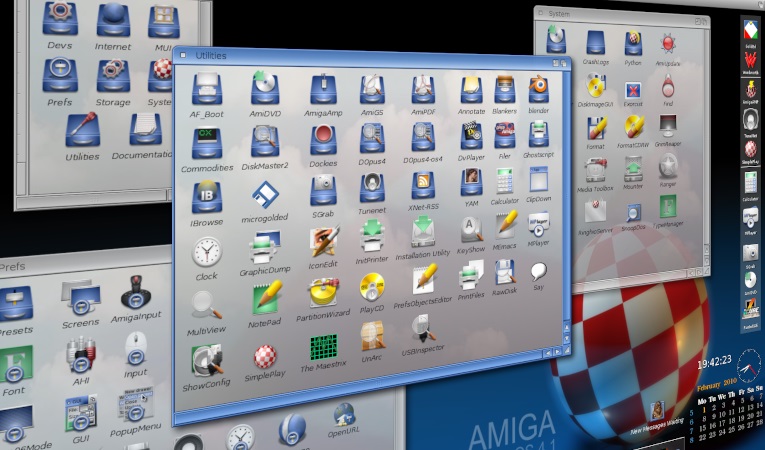
By supporting multiple architectures, AmigaOS could tap into a broader range of hardware, making it more accessible to users and developers alike. With expanded hardware support, AmigaOS could attract a new generation of users who are already familiar with and invested in Arm, x86, or RISC-V-based systems. This potential influx of new users would bring fresh perspectives, ideas, and contributions to the platform, revitalizing the Amiga platform and fostering growth. In the end, this would mean a big step forwards and the survivability of the Amiga paltform would increase significant, because the current balance of power in the Amiga scene is trapped in a sort of personal glorification scenario by some keyplayers instead of making real progress. A port of AmigaOS 4.1 to Arm, x86, and RISC-V could spark renewed interest in software development for the platform. Developers would have the opportunity to reach a broader audience and create applications that leverage the unique features and capabilities of AmigaOS on a wider range of hardware. This increased software availability could further enhance the appeal of AmigaOS and drive its adoption. If Hyperion Entertainment would start porting the operating system to new architectures it will offcourse face several technical challenges, because each architecture has its unique instruction set, which means that code written for one architecture will not directly work on another. None the less, this is the only roadmap for a succesfull AmigaOS because the PowerPC saga is a dead end and the upcoming A1222+ wich took 7 years to develop is probably the final nail in the coffin. Porting AmigaOS 4.1 to Arm, x86, and RISC-V architectures holds the promise of reinvigorating the platform and expanding its reach in the modern computing landscape. The benefits include increased hardware compatibility, attracting new users, stimulating software development, and opening up new commercial opportunities. Although porting will undoubtedly present many challenges, the potential impact on the computer scene in general (a European operating system and ICT ecosystem with a Linux strategy), along with the opportunity to engage with a broader audience, make the endeavor worthwhile. Ultimately, a successful new AmigaOS 5 based on newer hardware could secure the legacy of AmigaOS and position it for a vibrant and enduring future. It only requires a more out-of-the-box thinking by Hyperion Entertainment and to start looking for new partners.

